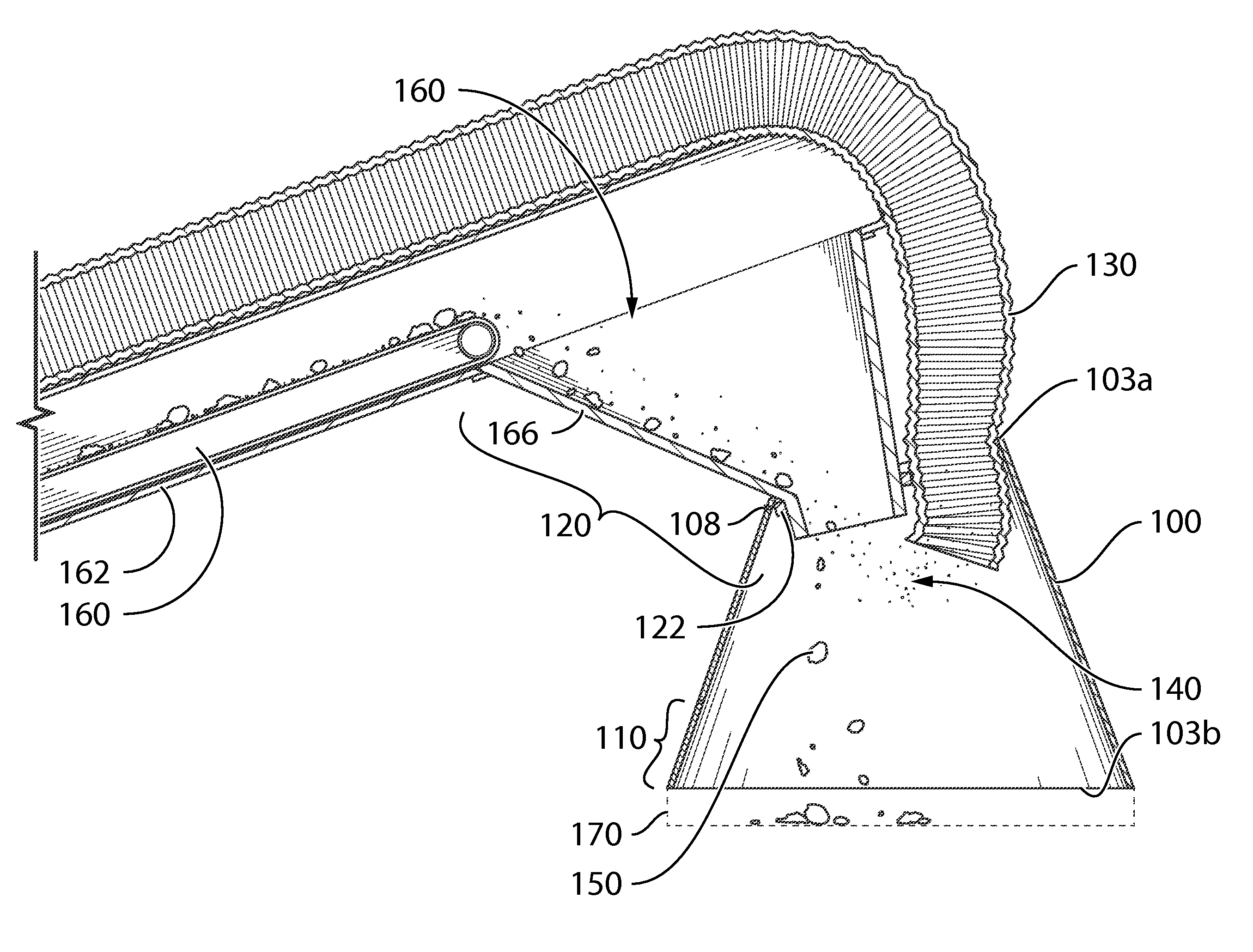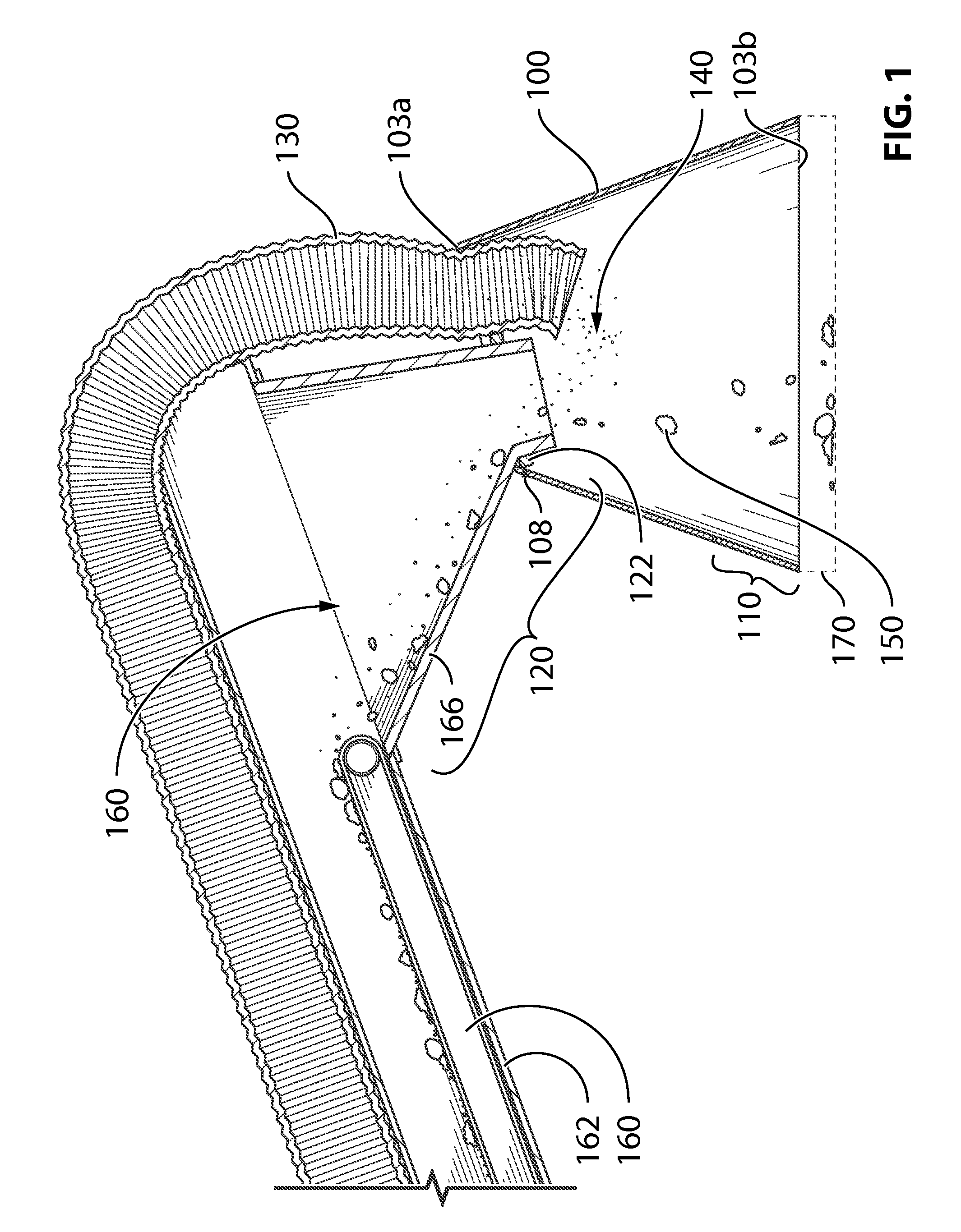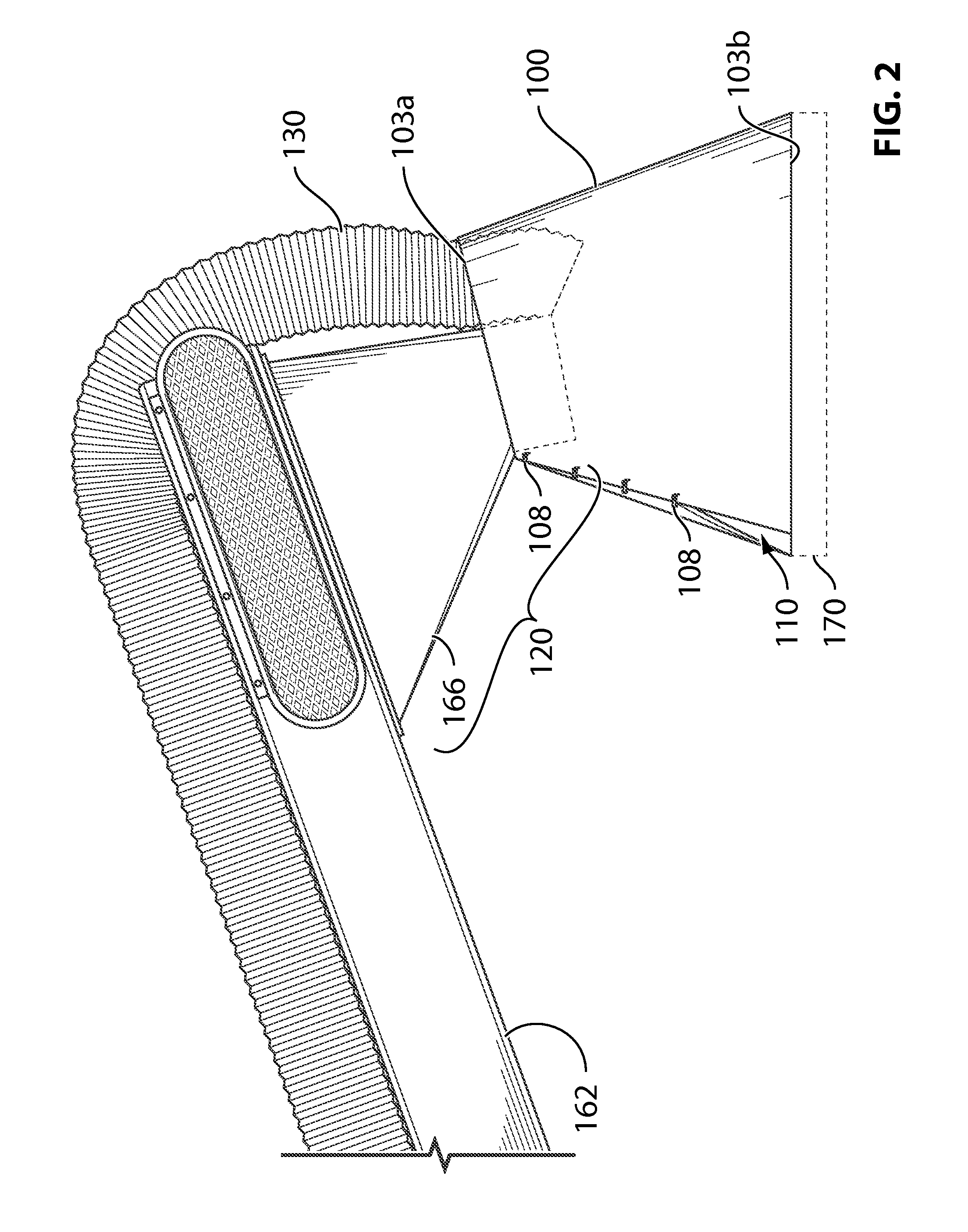Nose Cone for Dust Control
- Summary
- Abstract
- Description
- Claims
- Application Information
AI Technical Summary
Benefits of technology
Problems solved by technology
Method used
Image
Examples
Embodiment Construction
[0030]Described herein is a nose cone 100 with a viewing window 110 and, more specifically, a nose cone 100 with a viewing window 110 being associatable with a tail spout 120 of a sand handler (not shown) and a vacuum hose 130 of a vacuum system (not shown). The nose cone 100 provides an efficient and effective method of containing the dust 140 (e.g. silica dust 140) and / or other dangerous respirable and / or inhalable particles created in industrial processes such as fracking.
[0031]Exemplary nose cones may be better understood with reference to the drawings, but these nose cones are not intended to be of a limiting nature. The same reference numbers will be used throughout the drawings and description in this document to refer to the same or like parts. The shown shapes and relative dimensions are preferred, but are not meant to be limiting unless specifically claimed, in which case they may limit the scope of that particular claim.
DEFINITIONS
[0032]Before describing the nose cones an...
PUM
 Login to View More
Login to View More Abstract
Description
Claims
Application Information
 Login to View More
Login to View More - R&D
- Intellectual Property
- Life Sciences
- Materials
- Tech Scout
- Unparalleled Data Quality
- Higher Quality Content
- 60% Fewer Hallucinations
Browse by: Latest US Patents, China's latest patents, Technical Efficacy Thesaurus, Application Domain, Technology Topic, Popular Technical Reports.
© 2025 PatSnap. All rights reserved.Legal|Privacy policy|Modern Slavery Act Transparency Statement|Sitemap|About US| Contact US: help@patsnap.com



